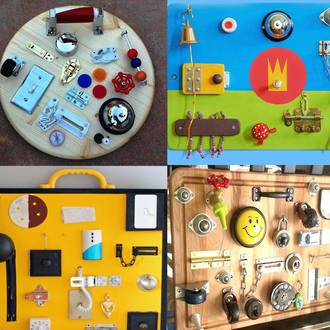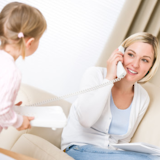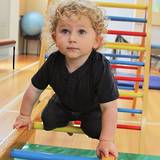Shop
02050
https://www.under5s.co.nz/shop/Hot+Topics+Articles/Toys+Books+Play/Sensory+play/Make+your+own+sensory+board.html
Make your own sensory board
|
A sensory board or busy board is a fun, hands-on activity for babies and toddlers to help them touch, explore and learn about different objects all in one place. They have lots of developmental benefits too and are really easy to make at home with things you have to hand.
|
You might also be interested in ...
Kids who interrupt
Does your child often interrupt you? When you’re talking to someone else, on the phone or in the middle of something, it can be frustrating when your child constantly interrupts. Teaching them how to determine if something warrants an interruption and how to pay more attention to other people's needs as well as their own will help control the interruptions.
Nurturing resilience in young children
In nurturing resilience in our children, it’s important to find a balance between the ‘bubble wrapping’ practices of a ‘helicopter’, over-protective and controlling parent on the one hand, and the laissez faire, under-supervised parenting practices on the other.
join usJoin us on social media for all our latest news. |
sign upSign up and receive our latest newsletters. |
|







Sensory experiences are vital for young children's brain development. They rely on sensory input to learn about their environment, and sensory boards help them to explore a range of textures and sensations and to stimulate their senses of sight, sound, smell and touch.
Sensory boards also encourage natural curiosity and investigative skills and help them to develop their fine motor skills as they coordinate their movements to feel the different materials.
Babies and toddlers gain a sense of themselves as they begin to develop preferences to which textures they like and dislike. A sensory board can also help children learn new words too as you describe the different things they are feeling.
Make your own Sensory Board
Your sensory board can be made from strong card, wood or even a big plastic lid. Then just use strong glue, nails or screws to stick on the various items you have.
There are no set rules when it comes to sensory boards, so make yours as cost-effective as possible with items you already have at home.
Here are some ideas on what you could use for your sensory board. Have a look at our zip sensory board idea too.
Ideas on what to include on your sensory board
Ensure your baby or toddler is always supervised in case any small items come loose from the board and they try to swallow them.
More kids activities articles to enjoy:
- Getting creative with your under fives
- Make your own sand foam
- Rainbow salt tray
Image source: via Pinterest